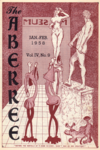Volume 4, Issue 9, page 3
7fuhh?i9 8c,gw
Is Meditation the "Missing Link" Be
and Whatever It Is One Is Try
By Rev. ROY
N THESE DAYS of sleep-tapes, hypnotherapy, auto-suggestion, running
engrains, E-therapy, etc., I wish to
remind starry-eyed aspirants of the
old standby on the road to Integration --
the gentle art of meditation.
If the reader sighs at this point and
says to himself, "I've been meditating
for years " , read on. Real meditation is
an art, and I think it is probably the
"missing link" between psycho-therapy and
whatever it is one is trying to accomplish. Whether one wants to strike a balance in life, or "go all the way" (whereever that is), meditation will assist in
the doing of it.
Far from being a lazy man's exercise,
meditation is an art. Rather than expound,
I shall proceed to outline the principles, then turn you loose for a few practice sessions. You can see for yourself
whether it is a valid system. I have yet
to find a better outline than is to be
found in the system of yoga, so I will
start here.
First of all, before we can even hope
to scale the heights (a figure of speech
only),we must lay a proper foundation for
a balanced program. This foundation means
that we must first arrive at an emotional
balance and mental harmony. I have seen
many so-called "pre-clears" who developed
wonderful ability, to a degree, but who
had never grown up emotionally and therefore, their abilities were misused. I
have seen them come up the Tone Scale to
where they could function rather well,
and then become starry-eyed with a sortof "Well, now what do I do?" attitude.
I f we are aware of how we get to a certain state of awareness, we can duplicate
the process (should we tumble down), and
also keep on climbing or growing in
awareness, if we want to, if we don't
chicken out. Seems as tho some of us get
to the edge of the cliff, but before we
leap into the wonderful world of freedom,
we back down and refuse.
The eminent metaphysician, Emmet Fox
once gave a sermon on this, and he calie
it "The Bogyman Under the Stairs", or th
"unknown" which causes us to stop progressing. so, we first become emotionall
balanced and functioning as human beings
Failure to take into consideration thi
first step produces the "old metaphysics
student", or "the screwball mystic".
To help us get this balanced attitude, we can be mental renunciates, o
JAN.-FEB., 1958 The ABF.RRF. F.
e y s
l /1
C d
tween the Myriad So-Called Therapies
ing to Accomplish by Using Them?
EUGENE DAVIS
objective in viewpoint. This gives us the
ability to see things happen and still be
unaffected by them, if we so choose. So,
we have the "objective" viewpoint -- the
balanced way of life -- and then we concern
ourselves with meditation.
How are we going to arrange our body
for meditation? Someone says, "Oh, I meditate while I work, or while I drive."
Bosh! That's reflection or thinking, it
isn't meditation. We don't lie down to
meditate, either, unless, of course, we
have a broken back or similar difficulty.
Most of us humans, thru long faithful
practice, find it very convenient to go
to sleep when we lie down; so, when we
try to meditate in this position, we tend
to repeat the performance and have subconscious experiences.
Let us be honest about this and sit
up. As westerners, we can sit in a comfortable chair (don't lean against the
back) in a relaxed, upright position,
with the hands on the lap; feet arranged
in a comfortable manner. This is in keeping with the idea of a posture in which
the body is comfortable and suitable for
meditation. Few westerners can sit crosslegged ala the Oriental yogis, so upright
is fine for us. It's a condition of consciousness anyway.
We have the preliminaries out of the
way. We have put the emotional life in
order. And we have learned to sit properly. Now the fun begins. What are we going
to do with the mind, the eyes, the breath,
the backaches? For this, we have techniques. The mind is going to be active
anyway, so we put it to work; that way,
we're the master. We find that by sitting
upright, with the attention placed " within", we can gather our thoughts and attention. We find that by lifting the eyes
gently to the point between the eyebrows,
that this tends to "lift" the consciousness. It also tends to centralize the
thought processes, and life current (energy), when it withdraws from the relaxed
muscles, flows up into the area of the
d brain. We can watch the breath (it sounds
simple, but try it) and let it come and
^ go, without control, and we are watching
the body breathe, function, and think. We
. see that we are not the body, breath, or
mind. This in itself is quite a revela1 tion to some. It doesn't entail anyone
outside giving commands, either. This is
^ called the Fourth Stage of life force
r control. When the life forces are with


